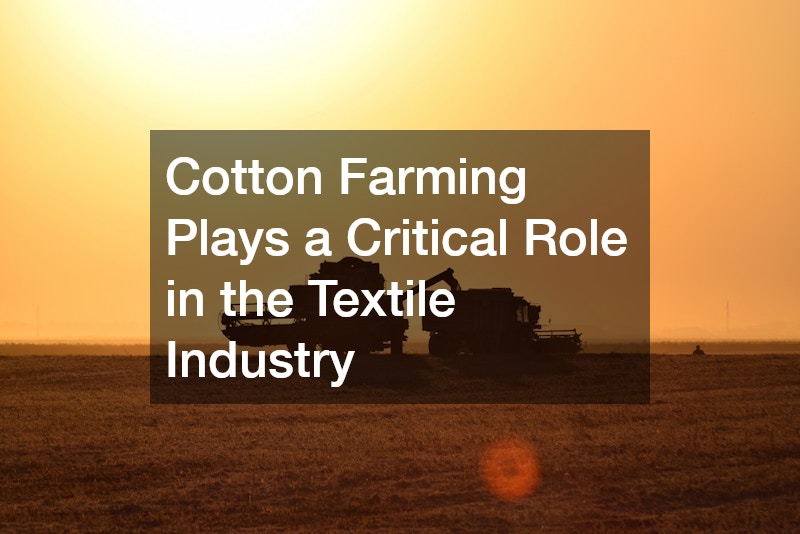
Cotton farming plays a critical role in the textile industry, serving as the primary agricultural source for a wide array of cotton-based products. From the moment the cotton is picked on the farm, it enters a complex journey that ultimately transforms it into the clothes we wear and the fabrics we use daily. This journey is not only a testament to human ingenuity but also highlights the intricate processes required to maintain quality and efficiency.
Once the cotton is harvested, it is transported to factories where its transformation begins in earnest. The initial stage involves rigorous cleaning to remove impurities such as seeds, dirt, and other debris. This is essential for preparing the cotton fibers for the subsequent stages of processing. With advancements in technology, the procedures at the factory have become more sophisticated, allowing for superior quality control and production efficiency.
Understanding the processes involved in moving cotton from farm to factory is not just fascinating; it underscores the cotton industry’s importance in the global economy. The journey from field to fabric involves an array of disciplines including agriculture, engineering, and environmental science. This article will delve into the key processes in cotton factories, the role of sustainability, and how innovations are shaping the future of cotton manufacturing.
How is Cotton Processed in Factories?
The journey of raw cotton through the factory is marked by several key stages, each integral to transforming boll to bolt. The first stage after cleaning is carding, where raw cotton fibers are disentangled and aligned to form a thin web. This method involves machines that use fine teeth to tease the fibers apart, preparing them for the smoothing process that turns them into a continuous strand.
Following carding, the cotton undergoes spinning, which is the practice of twisting the fiber to create yarn. Spinning machinery has seen significant technological advancements, increasing both quality and efficiency. This process is critical because the quality of the spinning determines the fabric’s strength and elasticity. The introduction of automated spinning machines has revolutionized the textile industry by boosting productivity and ensuring consistency in yarn production.
Once spun, yarn undergoes weaving or knitting, two methods used to construct fabric. Weaving involves interlacing two sets of threads at right angles on looms, a technique that produces a tight and durable cloth. Knitting, meanwhile, involves looping the yarn to create more stretchable and comfortable fabrics. The choice between these two methods depends on the intended use of the textile product. Both methods have benefited from modern machinery, which enhances capabilities for mass production and varied designs.
What Role Does Sustainability Play in Cotton Manufacturing?
Sustainability has become a cornerstone in today’s textile industry, and cotton manufacturing is no exception. The processes involved in converting raw cotton into finished goods consume significant amounts of water and energy and can contribute to pollution if not managed properly. As awareness on environmental impacts grows, factories are under mounting pressure to adopt eco-friendly practices. By integrating efficiency improvements and minimizing waste, factories strive to create more sustainable manufacturing cycles.
The environmental challenges posed by cotton processing aren’t just limited to water and energy concerns; they extend to the chemicals used in bleaching and dyeing. Factories are exploring sustainable alternatives such as organic and non-toxic dyes, which considerably lessen environmental harm. Moreover, innovations like waterless dyeing and low water garment finishing are reducing the ecological footprint of the textile industry significantly.
Beyond internal processes, sustainability in cotton manufacturing also revolves around ethical labor practices and community engagement. Many factories are implementing fair trade principles and investing in local communities through education and job training initiatives. This holistic approach not only improves factory conditions but also benefits social and economic spheres, fostering systemic positive change in regions tied to cotton production.
How Do Factory Innovations Impact Cotton Quality and Cost?
The intersection of technological evolution and manufacturing processes has dramatically impacted the quality and cost of cotton products. Automation stands out as a transformational force, reducing human error, increasing precision, and ensuring consistent high-quality output. Techniques such as laser cutting and computer-aided design (CAD) in fabric production have enhanced the accuracy and reduced waste, translating into cost savings.
Digitalization in factories facilitates real-time monitoring and predictive maintenance, minimizing downtime and repair costs. This connectivity allows factory managers to optimize processes, managing supply chain intricacies with smoother transitions from raw material procurement to finished product delivery. Such enhancements provide competitive pricing for manufacturers and improve the marketability of cotton products.
Innovations are not only beneficial for cost management but also for the superior quality of cotton textiles. Resilience, comfort, and durability are no longer their only selling points; with advanced manufacturing techniques, premium features, such as fabrics with moisture-wicking properties or built-in UV protection, are becoming increasingly common. This variety makes cotton an adaptable material suited for diverse applications by catering to expanding consumer needs.
Cotton’s transformation from farm to factory is a story of both tradition and technological advancement. By understanding the various processes involved, from cleaning and carding to spinning and weaving, we can appreciate the complexity and skill involved in creating everyday textiles. Furthermore, the role of sustainability in fostering environmentally and socially responsible manufacturing practices cannot be overstated.
As innovations continue to unfold, they promise to enhance both the quality of cotton goods and the efficiency with which they’re produced. Technological advancements have also leveled the playing field, allowing smaller factories to compete with larger ones by equipping them with similar capabilities. This trend ensures that cotton products remain affordable and accessible while maintaining high standards of production.
The commitment to sustainable practices and innovation is crucial for the longevity of the cotton industry. As we look ahead, the ongoing efforts to harmonize economic goals with environmental stewardship are paving the way for a resilient, future-proof textile sector that meets consumer needs without compromising planetary health. Understanding these dynamics will be vital for anyone invested in the future of textiles.

